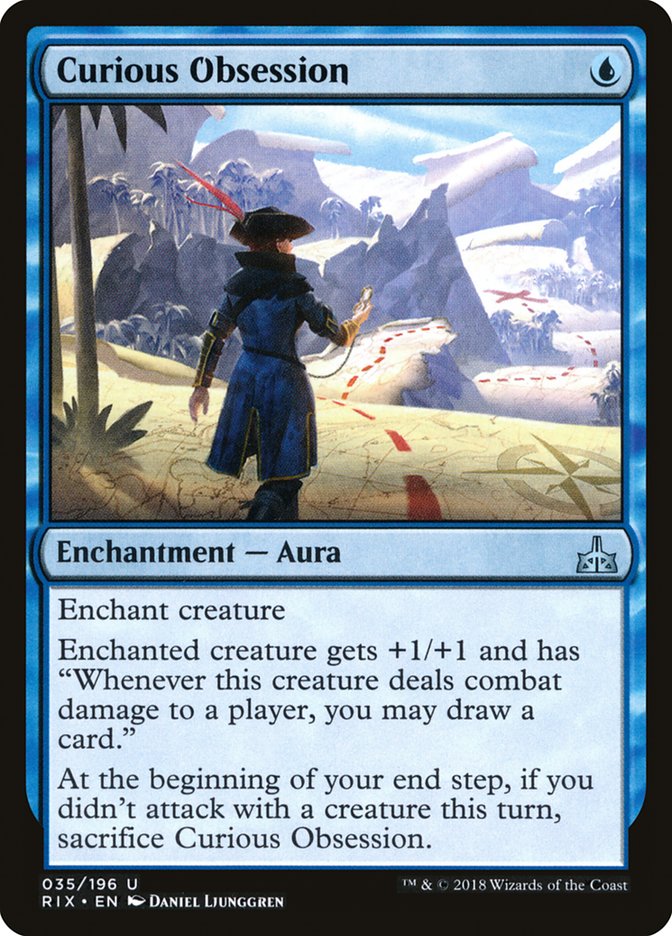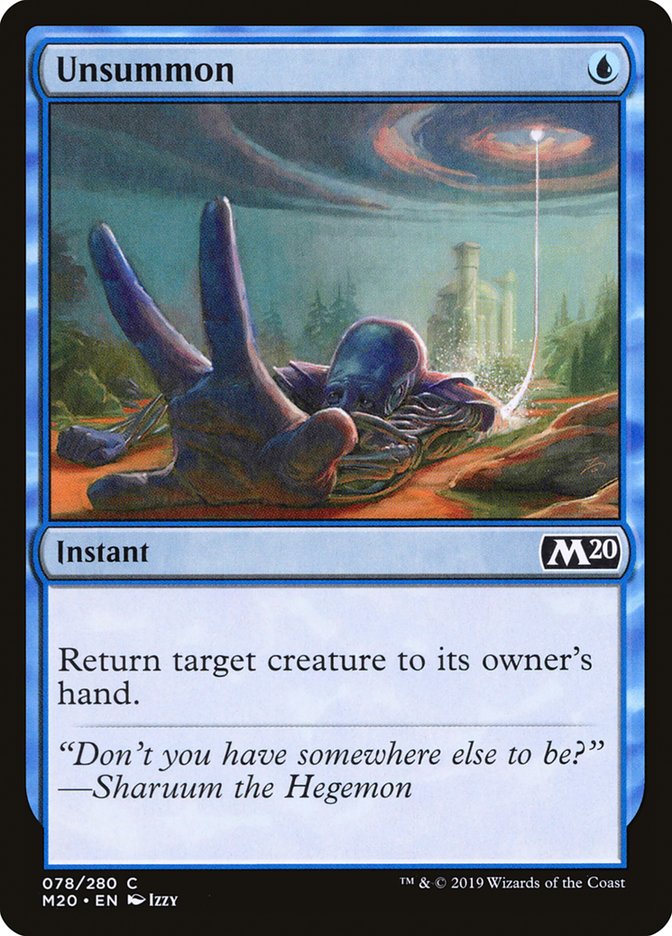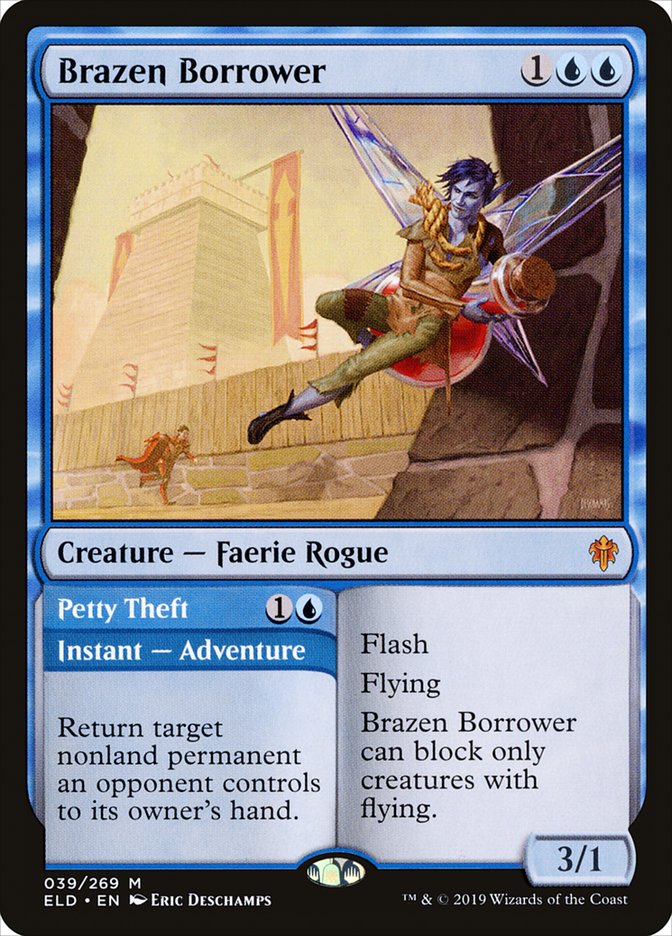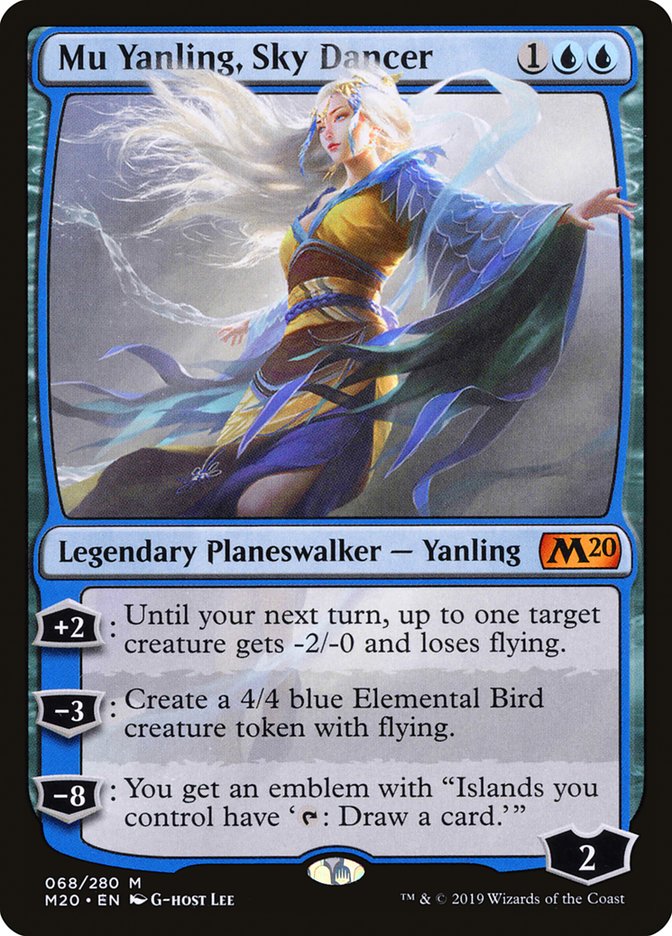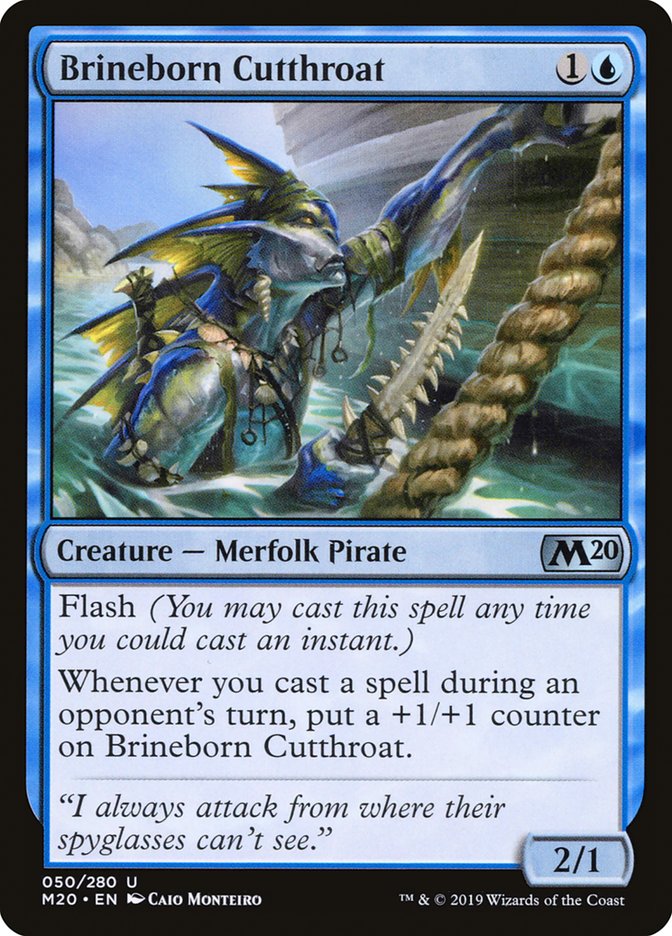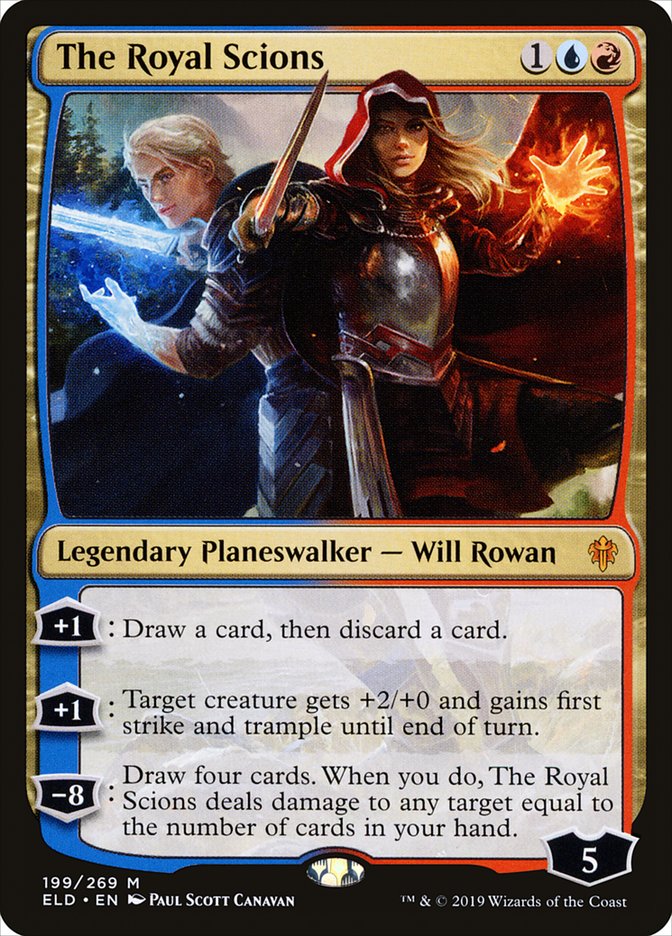I recently had the pleasure of playing in the Magic Arena Twitch Rivals event. This Standard tournament happened one day after the banning of three key green cards in the format, ultimately unlocking a huge number of playable archetypes. But the banned card I cared about most was Veil of Summer, a particularly jarring protection spell that ultimately invalidates counterspells.
For me, that meant picking back up where I left off. During the opening day of Throne of Eldraine Standard on Magic Arena, I built a sweet looking Mono-Blue Aggro deck, but I put it down both because playing Standard was not much fun and Veil of Summer was a nightmare. I went to Modern, and ultimately Pioneer, and never looked back. But banning stuff and putting up $75,000 for a tournament I can play from home was more than reason enough for me to give Standard another chance.
Before Throne of Eldraine, one of the stronger decks in Standard was a different kind of Mono-Blue Aggro deck.
Curious Obsession was a card you built around. And that type of deckbuilding is typically referred to as “protect the queen,” where you put all your eggs in one basket and use all your other resources to keep it alive and running strong. You want to play cards that protect it like Dive Down and Siren Stormtamer. And by putting such an emphasis on interaction in the first few turns, you also increase the strength of situational protection like Spell Pierce.
But most of those cards are no longer in Standard, so we’re not actually playing the same deck. Even though our lands are all tapping for one color and most of our creatures fly, we’re not really playing the same deck at all. We don’t have Curious Obsession, so what’s the point of protecting the queen?
On Monday, after returning from SCG CON Winter, I got to work. Here’s the list I ended up playing in the Twitch Rivals event.
Creatures (18)
Planeswalkers (2)
Lands (22)
Spells (18)
Sideboard

Aggressive Bouncing with Mu Yanling
One of the first things I noticed with this deck was how good Unsummon was. My first build of the archetype featured four copies, and I haven’t ever considered cutting one. I was amazed at how good it was at playing both sides of the table. Protecting my creatures from Swift End or Stomp while getting rid of their Murderous Rider or Bonecrusher Giant is huge! But since most of your creatures have flash, protecting your creatures from removal with Unsummon means you can usually cast them immediately after.
Unsummon on your opponent’s creatures is also potent at the moment. And while that will occasionally give them another card or enters the battlefield effect, taking your opponent’s life total to zero usually makes it so all the cards stuck in their hand are effectively dead. Right now, creatures like Rankle, Master of Pranks and Questing Beast are seeing a ton of play. And while both have haste, they also cost a lot of mana to cast. A single Unsummon can occasionally steal the game by itself.
But in addition to Unsummon, you also get Brazen Borrower, which is just unbelievable in this deck. I kept thinking of Petty Theft as a pretty weak card, but that’s not it. It’s a free spell you get to cast on the second turn of the game to slow down your opponent’s development, and you essentially draw a card. That card is always a 3/1 flyer that can only block flyers, but that’s a pretty good impression of Repulse if you ask me.
The pairing of these two bounce spells also puts a bit of emphasis on your three-drop slot, as your follow-up should be pretty powerful as a punisher effect. Spending a card to bounce a creature is a net disadvantage as far as card economy is concerned, so it’s imperative that the rest of your cards gain virtual or actual card advantage when your opponent falls behind on the battlefield.
I tried a couple of different creatures in the three-drop slot, but the card that kept standing out as the most powerful after bouncing an opposing creature in the early turns was Mu Yanling, Sky Dancer. It was really impressive, as it felt powerful but also made it feel like I had a lot of potential options. It’s one of very few planeswalkers I’ve used in a long time that didn’t feel overwhelmingly powerful, gave me plenty of decisions, and didn’t exactly end the game on the spot when left unchecked. I regularly have the decision to make a 4/4 or push toward the ultimate, and I almost always value the 4/4 body since all your spells become better when you have a large body on the battlefield.
Like any aggressive blue deck, you need some threat doing work while you spend your spells to inefficiently deal with your opponent’s stuff. In Legacy, Delver of Secrets can come down early and beat down while your disruption stifles their development. We don’t have the same tools, but the idea of “tempo” here is pretty similar – use your spells to get a foothold on the battlefield, keep your opponent from establishing resistance, and punish them for not interacting with you.
Mu Yanling, Sky Dancer is one of the few threats in the format I’m willing to tap out for, but it certainly makes the bounce effects that much better. If your opponent doesn’t have removal specifically geared towards planeswalkers, the bounce effects should make it virtually impossible for them to get Mu Yanling off the battlefield before you get full value out of it.
Brineborn Cutthroat and the Tarmogoyf Effect
Most of the creatures you play in decks like this need evasion. Blue tends to have skinny creatures that don’t rumble in combat too well, so they need to be unblockable in some way or another. Most of the time, that evasion comes in the form of flying, but blue decks will sometimes get access to a creature that defies the normalcy of blue-based tempo decks. In older formats, you can pretty easily play one of the best blue cards of all time:
Yes, it might have a green mana symbol in the casting cost, but I can assure you that Tarmogoyf is one of the most impactful blue spells in Magic’s history. When you get to use fetchlands and Breeding Pool or Tropical Island, playing a green card in your base blue deck becomes effortless. And what blue decks usually need is a way to push the envelope when you’re sitting on counters or conditional removal. Tarmogoyf was that big threat before Delver of Secrets was printed but continued to be a major part of Legacy tempo decks for a long time and is still one of the best threats for this type of deck in Modern.
While we don’t have Tarmogoyf proper, we did recently get a blue creature that looks a lot like Tarmogoyf if your deck operates primarily on your opponent’s turn.
Counter your opponent’s planeswalker? Get a counter. Bounce their creature? Get a counter. Do just about anything on your opponent’s turn and Brineborn Cutthroat gets a counter!
It builds quickly and can be particularly potent when combined with stuff like Brazen Borrower. Adding two counters to Brineborn Cutthroat while bouncing a creature and creating a medium flyer is outrageous.
Brineborn Cutthroat creates a snowball effect that can end games very quickly. And while most of your creatures need to a little help to get across the finish line, Brineborn Cutthroat absolutely does not. Some of the more absurd draws feature two Brineborn Cutthroats and an Unsummon, which isn’t a lot to ask from a deck that plays four copies of Opt.
As far as threats go, Brineborn Cutthroat is the most valuable against control decks, as it doesn’t require much to close out the game in three or four attacks. However, the large body it generates can also be a potent defensive creature against opponents who gum up the ground. And in the right spot, you get to turn a corner, bounce a few creatures, and force them into a situation where they’re having to chump block. And when that’s the case, your bounce spells effectively set your opponent back a ton of mana and a card.
What Went Wrong
In the Twitch Rivals tournament, I learned a few things about my deck and my own play with the archetype. First of all, I want to start by saying that no one was able to efficiently test for this tournament. Personally, I came home from SCG CON Winter and started playing almost immediately, and I only got in four or five hours playing the format before it was time for bed. And in the morning, we had to submit our decklists. Overall, it was less than 24 hours from the announced bannings before we had to put in our final decklist.
That means a lot of people, myself included, were testing with a less than ideal list that could definitely use improvement. Personally, I felt like my deck did a lot of the heavy lifting, but it definitely wasn’t easy to play. It takes patience, knowing when to deploy your interaction, and a deep understanding of your role in each matchup and scenario. At times, I felt myself try to get aggressive when it wasn’t necessarily correct to do so. At other times, I chose not to deploy a threat to hold up a counterspell, and I’m confident that ended up incorrect on numerous occasions.
It is paramount that you play with this type of deck a bunch before entering a tournament, if only because not every line with this deck is cut-and-dried. You need to find the spots to resolve your creatures and leave yourself vulnerable. You have to apply pressure while holding up counters or else your protection and “removal” just isn’t nearly as valuable.
There’s also a good chance that I’m building this deck ten or fifteen cards wrong.
When I first worked on Azorius Delver back in the heyday of Innistrad Standard, my initial builds all revolved around Illusions. I was obsessed with Lord of the Unreal pairing with Phantasmal Image. And because of that, I also thought Phantasmal Bear was a great card. I mean, it was, but perhaps it wasn’t as good as building around the card Delver of Secrets. We’ll never know.
The joke here is that the deck I was initially working on was successful. I won a tournament and Top 8’ed a few more with my take on a blue aggressive deck built around Illusions. I didn’t even have Vapor Snag in my original build! But that just means you can find a strategy that feels good, but you can mold the rest of the deck around it to find the best suite of removal, interaction, and threats. That might even mean splashing another color!
With so many small creatures, having something like The Royal Scions to give them a bit of extra punch is a big deal. Giving Brineborn Cutthroat trample is huge! Looting away extra lands or dead counters is also pretty sweet. With that said, the strength of the Mono-Blue Aggro deck is that its only one color, so your lands don’t enter the battlefield tapped and you never have spells stuck in your hand. Just because you can splash something doesn’t mean you should. But the opposite can also be true, so I don’t want to put myself in a box. Just know that I’m not playing Mono-Blue because I forgot about X or Y card.
The Next Episode
After playing ten or fifteen matches with the deck, here are some things I learned and might want to change:
1. I lost every game where I got stuck on two lands.
Because of this, my plan is to find room for another land or maybe two in the maindeck. You can use that extra mana with Spectral Sailor, but the trouble comes from drawing an opening hand with five lands in it. You just can’t keep those. If we do add another land or two, I’m going to explore playing Gadwick, the Wizened maindeck.
2. Gadwick, the Wizened was absurdly good.
I can’t even begin to explain how good Gadwick, the Wizened was for me in testing. Just having a four-mana 3/3 that draws a card and potentially ruins combat for the opponent is outrageous. It doesn’t fit the “tempo” narrative, but some cards are just good enough to break out of that mold.
3. Heart-Piercer Bow was better than expected.
I thought I might have trouble with Edgewall Innkeeper, so Heart-Piercer Bow was basically the only thing I could find that felt palatable. I put it in the sideboard with zero testing, only brought it in against an aggressive white deck, but it felt great. I don’t think I’d play more but I was pleasantly surprised by how good it was.
4. Pteramander was just Flying Men in most situations.
I didn’t feel like Pteramander was good enough, but there’s value in having cheap creatures to help make it mediocre to minus Teferi, Time Raveler. Faerie Miscreant is on my to-try list, as it was pretty great in Pauper.
5. The Adventure creatures gain actual card advantage, and they’re both phenomenal.
The heart and soul of this deck are the Adventure creatures. Don’t be afraid to cast Hypnotic Sprite on the second turn, as having any creature on the battlefield to get aggressive means future spells are better and their planeswalkers are worse.
6. In all my matches, I didn’t activate Castle Vantress more than once or twice.
Not sure if that’s a good thing or a bad thing, but I didn’t activate Castle Vantress very much at all. I think the effect is not as useful in our deck as it could be in control or alongside Fires of Invention or Wilderness Reclamation.
7. Aether Gust and Mystical Dispute are awesome.
Your sideboard should contain plenty of both these hate cards, as they give you protection from a tougher matchup (red) and Teferi, Time Raveler.
8. Sorcerous Spyglass was mediocre.
The one game I drew and cast Sorcerous Spyglass, I named Vraska, Golgari Queen against an opponent who was playing Witch’s Oven. I’m not sure it’s worth playing because the decks it could be good against all have built-in answers with their planeswalkers or utility spells.
Moving forward, I’ll be trying the following list.
Creatures (16)
Planeswalkers (3)
Lands (23)
Spells (18)
Sideboard

This iteration is similar to the previous one, but that’s because both of my losses in the tournament were “user error.” The changes are just the stuff I felt out from playing with the deck more. Another land; another Mu Yanling, Sky Dancer; and a few changes to the sideboard are minor for a deck that didn’t win a tournament. I’ve changed more about a deck after going 5-0 in a League. Hell, I’ve changed more cards after winning an Open!
In the coming weeks, I plan on playing more Standard to see if it’s better than it was before. My gut says the bannings will help the format significantly, but I’ve really enjoyed my time playing Pioneer and plan on keeping my focus there. Plus, they didn’t ban anything out of my Mono-Green Devotion deck this week, so I get to keep playing the same stuff!
If you’re a fan of tempo-based decks, I think you’re really going to like playing this Mono-Blue Aggro deck. I rarely have first drafts feel this tricky and strong, so if you like Delver decks in older formats, give it a shot and let me know what you think!


